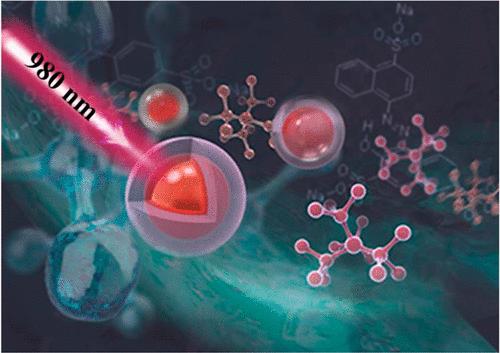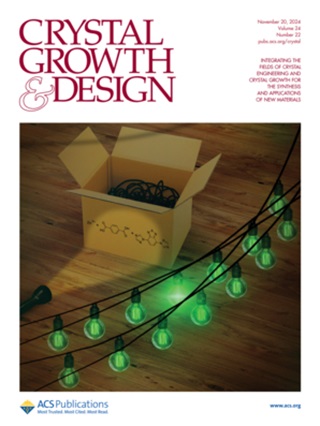Na3GaF6:Ho3+,Yb3+@SiO2:用于食品色素检测的新型上转换传感器材料
IF 3.4
2区 化学
Q2 CHEMISTRY, MULTIDISCIPLINARY
引用次数: 0
摘要
上转换纳米晶体被广泛应用于痕量物质检测领域,但高灵敏度的定量分析仍具有挑战性。本文开发了一种用于食品色素检测的新型光学传感材料。采用共沉淀法合成了一系列具有单斜相的上转换纳米晶体 Na3GaF6:Ho3+,Yb3+。为了修饰纳米晶体表面并限制发光淬灭,设计了具有核壳结构的Na3GaF6:Ho3+,Yb3+@SiO2上转换材料,通过调节Ho3+/Yb3+掺杂比和SiO2壳层厚度实现了高强度上转换发射。同时,基于荧光共振能量转移现象,我们将 Na3GaF6:Ho3+,Yb3+@SiO2 上转换发光材料应用于食品色素(苋菜红)的浓度检测,并详细分析了其检测机理。此外,该研究还提出了一种具有高灵敏度和高选择性的食品色素检测策略,具有重要的实用价值,可有效保障人类健康。本文章由计算机程序翻译,如有差异,请以英文原文为准。

Na3GaF6:Ho3+,Yb3+@SiO2: A Novel Upconversion Sensor Material for Food Pigment Detection Application
Upconverting nanocrystals are widely used in the field of trace substance detection, but quantitative analysis with high sensitivity remains challenging. In this paper, we developed a novel optical sensing material for food pigment detection. A series of upconverting nanocrystals Na3GaF6:Ho3+,Yb3+ with a monoclinic phase were synthesized by the coprecipitation method. To modify the nanocrystal surface and limit luminescence quenching, Na3GaF6:Ho3+,Yb3+@SiO2 upconverting materials with a core–shell structure were designed, where the high-intensity upconversion emission was realized by the modulation of the Ho3+/Yb3+ doping ratio and SiO2 shell layer thickness. Simultaneously, based on the fluorescence resonance energy transfer phenomenon, we applied the Na3GaF6:Ho3+,Yb3+@SiO2 upconversion luminescent material to the concentration detection of food pigment (amaranthine red), and the detection mechanism was also analyzed in detail. In addition, this work presents a promising strategy for food pigment detection with high sensitivity and selectivity, which holds significant practical value and effectively safeguards human health.
求助全文
通过发布文献求助,成功后即可免费获取论文全文。
去求助
来源期刊

Crystal Growth & Design
化学-材料科学:综合
CiteScore
6.30
自引率
10.50%
发文量
650
审稿时长
1.9 months
期刊介绍:
The aim of Crystal Growth & Design is to stimulate crossfertilization of knowledge among scientists and engineers working in the fields of crystal growth, crystal engineering, and the industrial application of crystalline materials.
Crystal Growth & Design publishes theoretical and experimental studies of the physical, chemical, and biological phenomena and processes related to the design, growth, and application of crystalline materials. Synergistic approaches originating from different disciplines and technologies and integrating the fields of crystal growth, crystal engineering, intermolecular interactions, and industrial application are encouraged.
 求助内容:
求助内容: 应助结果提醒方式:
应助结果提醒方式:


